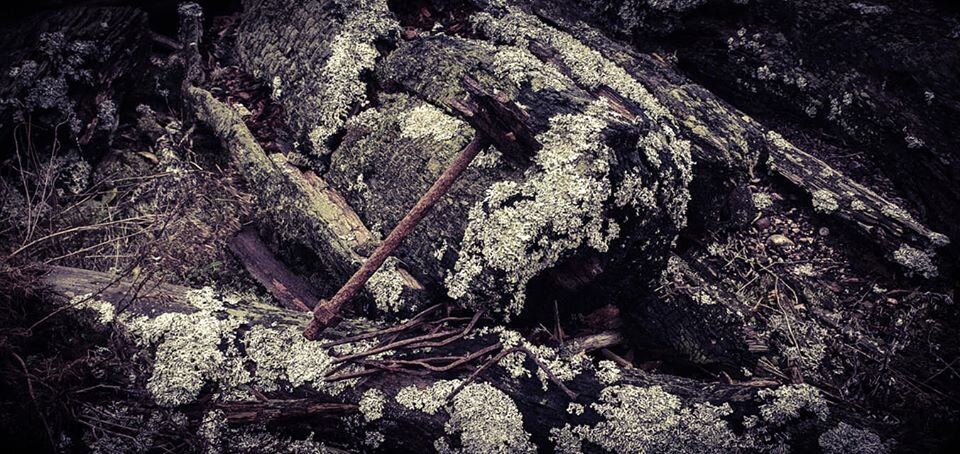Örö is a 2km² island in the southern outskirts of the Finnish archipelago. Used as a military fortress from the early 1900s until the end of 2014, it is home to many rare species, due to being closed for over 100 years. With one side of the island facing the open Baltic Sea and the other side being sheltered by the picturesque lattice of the archipelago, Örö is a concentration of diverse habitats and geotypes alongside the military history.
For Cutler’s residency on the uninhabited island over the winter of Dec 2019-Jan 2020 at the Örö island residency programme, she began developing an experimental study creatively springing from the concept of scale and fractals in nature documentary, using a material approach to filmic techniques - including structures of ice and forms of camera lens and perspective which mutate and melt into each other. Resetting the formula of the nature documentary and its narratives of loss, extinction and ending, this film of the year’s end took four approaches to capturing Örö’s sea, forest and fortress environments: micro quadrats, macro landscapes, organic materiality and temporal cycles. The work builds these different outcomes into a kaleidoscopic portrait of the island, shifting from microcosms in ice to the macroscales of extinction. These novel moving image approaches are inspired by Stacy Alaimo’s declaration in “Your Shell on Acid” - that the Anthropocene must now be thought with dissolving scales and entities in mind.
Taking place in the biodiverse military zones of an uninhabited island, the residency brought certain science fictions to mind: the imagined or projected islands of The Invention of Morel or The Island of Dr Moreau, and the single-narrator accounts of extinction by characters such as Mary Shelley’s Lionel Verney. However, the intended threads of extinction narrative (such as, specific to Örö, the stories of the ghost antler lichen and the rare Apollo butterfly) were also overtaken by real-world events during the period of the residency, from the reports of the UK election at home over the laptop screen watched in the Finnish military bunker, to world news of Australian fires and the record heating of sea temperatures. Receiving these messages in the dark of the Finnish archipelago, with only a few hours of light per day, Cutler’s project to explore ice and extinction began to seem strangely wrong – closer to the experience of Adam Jeffson in M. P. Shields’ The Purple Cloud, whose expedition to the North pole, unbeknownst to him, unleashed a world-deathly vapour from the ice, killing off the rest of the social world with his ironically misplaced Romantic sublime isolation.
As this work’s sound recordings and films are being developed back in the UK in early 2020, it is being tested in the form of multi-media, non-linear installations. So far, Vigil for Örö (working title) has been performed/exhibited as part of Baltica Memory and Landscape at The Old Biscuit Factory, London, and as part of the hands-on FUTURE IMPERMANENT speculative research event, at the Wimbledon School of Art. During the residency, the aesthetics of the film began to be shaped by the forms of navigation of the island - a constant strange, stumbling double-vision, caused by travelling the same space by torchlight and the sound of the radars. This project’s stumbling double vision also returns again to the unstable figure and meaning of the “geographer” as a grieving narrator - as land writer, illusionist/fantabulist, or even fantasist, from Strabo and Mandeville on. Cutler’s several screen film installation, sound piece, specimens and narration explored the crossover in ideas of orienteering, from the construction of scientific observatories and quadrat ecologies in the original environment, to the construction/generation/ marking out of a film environment using light and spatial senses. Each installation will draw on the original mechanics of the nocturnal residency, including days spent entirely in the dark at a makeshift moth examination station in the bunker, or lichen specimen desks in the woods in the dark, or vigils on the outcrops of the island with a cemetery candle (since no open flames are allowed on the island, cemetery candle lanterns had to be used on the residency). It also draws on other forms of grief vigil – like the narrative of Dear Esther, a first person game by a grieving narrator, navigating the generated computer landscapes of an uninhabited Hebridean island by torchlight, over and over. In this case, the film returns as walk-through to the specific spaces and times of the island; the abandoned railways leading into the sea, the solstice, and the marking of the “cold moon” or Long Night’s Moon, i.e. the final full moon of the decade.
The film is adapting into a project which also explores grief and narrative voice across the concept of both extinction memoirs and geographical memoirs. What is the key to unlock this cryptic geography, from naval surveillance, coastal artillery, Tarkovskyesque zonation, and the building of scientific pictures of the island in recurrent torchlight navigations and candle lit visits to the out-of-season nature centres? The film aims to explore this not just in the original residency’s creation of the materials, but in the forms of non-linear presentation, which uses varied screens and simultaneous projections, specimens, and head-torches. It considers not geography, but the speculative capacities of a return to “the live geography show”, particularly at the end of the world.




















